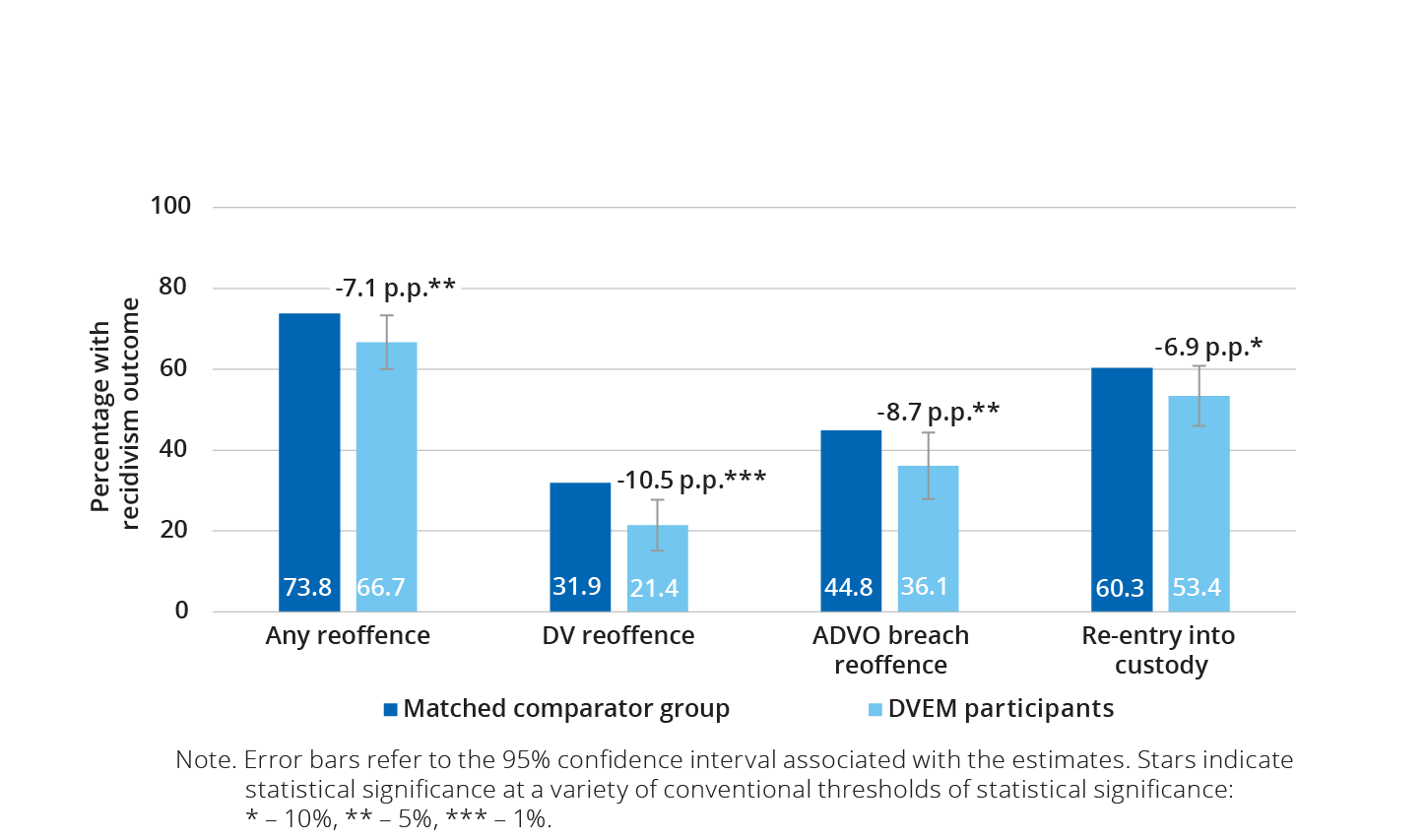Summary
Background
The Domestic Violence Electronic Monitoring (DVEM) program was introduced in June 2016 and is the first electronic monitoring program in NSW to target domestic violence (DV) offenders and their compliance with Apprehended Domestic Violence Orders (ADVOs).
Offenders on the program have a GPS-enabled monitoring device fitted to their ankles, and have their location tracked at all times against exclusion zones drawn from their ADVO (e.g., the location of the victim, their place of residence, any other place specified). Offenders are contacted if they enter an exclusion zone and asked to leave. Police are contacted if they do not comply.
To estimate the association between program placement and recidivism, we identify 226 DVEM participants and 768 offenders who met all eligibility criteria for DVEM but did not participate. We utilise entropy balancing to match program participants on all observed characteristics. For DVEM offenders and the matched group of non-DVEM offenders, we then compare the following outcomes within 12 months:
1. Any reoffence
2. Domestic violence reoffence
3. ADVO breach reoffence
4. Return to custody
Key findings
Figure 1 shows the proportions of and differences in reoffending outcomes between DVEM offenders and the matched non-DVEM group after controlling for relevant demographic and offending characteristics.
We estimate that DVEM participants were 7.1 percentage points (p.p.) less likely to reoffend with any offence, 10.5 p.p. less likely to reoffend with a proven DV-flagged offence, and 8.7 p.p. less likely to reoffend with an ADVO breach offence within 12 free months following release to their index parole episode. While DVEM participants were also 6.9 p.p. less likely to return to custody in this period, this result was only significant at a less conventional 10% threshold of statistical significance.
When considering baseline reoffending levels, this reflects relative decreases of 9.6% in any reoffending, 32.9% in DV reoffending, 19.4% in ADVO breach reoffending and 11.4% in re-entry into custody for DVEM participants relative to the matched control group.
Conclusion
DVEM participation is associated with significant reductions in the probability that an offender reoffends and/or is imprisoned within a year of release.
